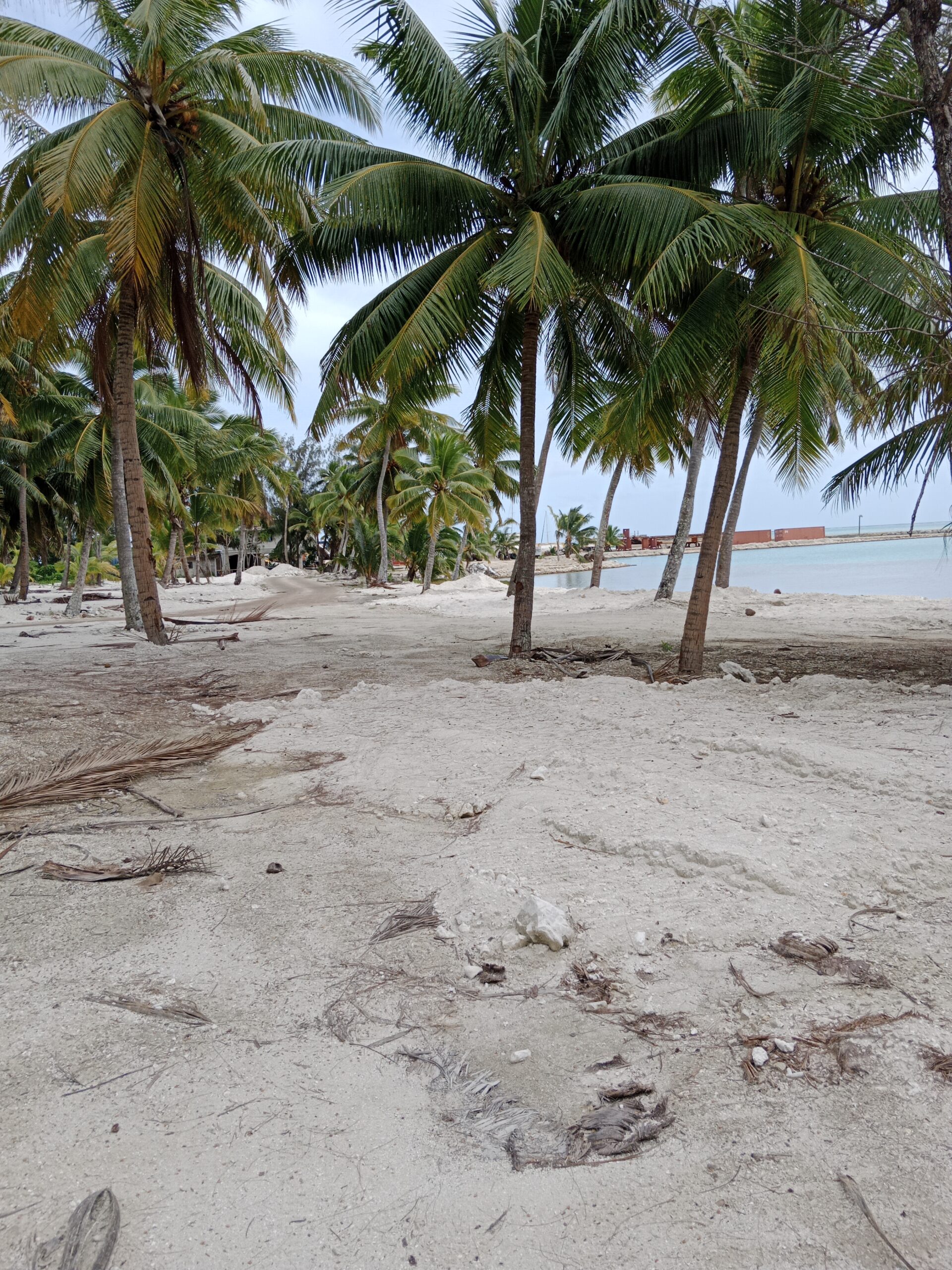Letter: Too little too late for Aitutaki lagoon and reef
Monday 14 August 2023 | Written by Supplied | Published in Letters to the Editor, Opinion

Adjacent to fishing club, the Natural fauna and beach gone. SUPPLIED / 23081308 / 23081309
A couple of weeks back the National Environment Service (NES) announced $400,000 funding to undertake a foreshore study of Rarotonga and Aitutaki.
On Thursday 3rd August’s CI News, NES director is quoted “They are sourcing technical expertise to carry out an effective monitoring plan of the development”
All a little too late for Aitutaki’s lagoon and reef.
Well, NES, CIIC have a lot to answer for.
The Aitutaki marina project is the greatest act of environmental vandalism in Aitutaki since the commercial harvesting of local paua in the 80s that destroyed coral heads and changed this once stunning lagoon forever. Unsurprisingly one of the primary factors of the paua harvesting disaster is the proponent for this current marina development project. If you lived in Aitutaki from the early 80s back you will know how amazing the lagoon was, once rich in marine life of every colour imaginable.
Paua so plentiful that they could be harvested from the shore in knee-deep water.
Though only found in sparse pockets of the lagoon, paua continue to be harvested even to this day but are in such low numbers that natural recruitment struggles to maintain a viable population.
The loss of such an outstanding paua fishery is just one of many impacts that risk the lagoon’s status as an unspoiled natural asset that attracts tourists from all over the world.
As a tourist attraction, the lagoon is very much “the jewel in the crown” for the Cook Islands. Unfortunately, the once spectacular natural features of Aitutaki’s lagoon are fast becoming just a sad lifeless expanse of its former state.
How the current marina development project was even approved by NES and funded in the first instance is mind blowing.
Considering the expertise required, the scale and location of this development, and the risk of significant environmental degradation, the environmental assessment and operating conditions were ill prepared and thought through.
This project should have been preceded by a full cost benefit analysis, an operational plan and an environmental impact assessment that included lagoon hydrodynamics and sediment modeling.
In addition, an independent review of the project should have been carried out with stringent monitoring conditions put in place. Instead, we have witnessed “seat of the pants” management and significant areas of environmental degradation. There has been little, if any, attempts to avoid, minimise or mitigate the impact this operation has had on the marine environment.
The people who initiated and ran the project had never done this kind of work before! How on earth did they get the green light? Where was the oversight? How did the proponent(s) avoid the clutches and scrutiny of the government's own policies to ensure tax payers money is used prudently?
Aitutaki's lagoon is beamed globally across social media as the most beautiful in the world showing glossy images of One foot Island and others with their pristine white sandy beaches. This PR exercise ignores how bad the state of the mainland's foreshores is. Walk from Pacific Resort to the Aitutaki fishing club, you'll see greenish sand and as you get closer to the wharf, it's filled with black algae and devoid of life. A result of dredging on the fishing club side of the wharf, the lagoon between Amuri and Ureia doesn't drain as it used to with the tides. It’s stagnant with the stench of silt and mud. The sediment from dredging activity has also smothered and choked the reef, as highlighted by Dr Teina Rongo during their taramea extraction mission recently. This is an absolute disaster for the reef ecosystem. Simply put, dead reef means no life, no fish.
The planning of where to dump the tonnes of mud from the work was ad-hoc at best. Despite the obvious environmental damage, tonnes of sand/sludge were dumped on neighboring land either side of the wharf killing beachfront fauna including a beautiful coconut grove on the Arutanga side. The salty mud will eventually set like concrete.
Imagine if the Avatiu wharf dredging waste was dumped on the beachfront along properties in Tupapa? Wouldn't happen right. NES just sat on their hands while this destruction took place and let the well-oiled machine of politics take its course. Would this happen in Rarotonga? No.
Aitutaki's population hasn’t grown past 2000 for years. One of the primary reasons for the marina development propagated by the proponents is to improve shipping access through the channel. Well, cargo has been delivered through the channel for over 100 years. Clearly this isn’t the kind of development that is appropriate for this delicate and already fragile environment. The millions spent to service less than 2000 people and a population that is never going to increase much beyond that is a complete waste.
How this project was to benefit the local population is still not clear and it would be difficult to argue that such a significant chunk of funding could have been better spent elsewhere. I'm sure the locals would agree that a better use of this funding would have been to fix Aitutaki's water and sanitation crisis. Think of the benefits that would have been for the people of Aitutaki and ultimately - the health of the lagoon!
This whole saga is an exercise of self-serving interests by one man and a gullible band of powerful men under the guise of benefitting the island.
From razing old growth trees, disappearing tupa habitat and to the overcrowded flotilla of boats/tour-operators on the lagoon. There is sadly so much wrong with the pace of development in Aitutaki.
A lack of vision, leadership and without a long-term management and conservation plan for both land and sea, to save what’s left of this once pristine island. The degradation will continue unabated.
Te Mata ote Ai Tupuna












































